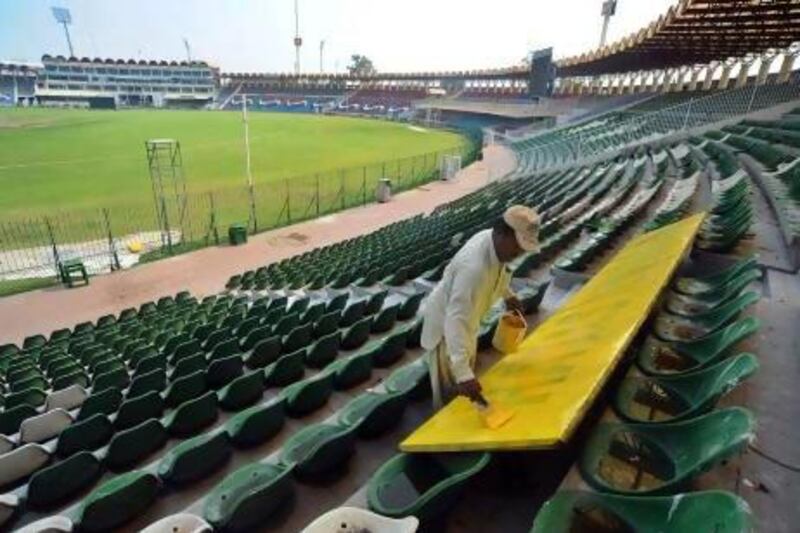The Pakistan Cricket Board (PCB) launched its very own Twenty20 league, the Pakistan Super League (PSL), in Lahore last week. All told it has taken over three years for them to reach the point where they have a logo in place for it; talk of such a league first emerged as early as 2008.
The PSL is now scheduled to take place in March, with five franchised teams playing 23 matches over 15 days, all at one venue. Grand as the launch ceremony was, however, a number of questions remain and not too much time.
Does international cricket need another Twenty20 league?
Probably not, given that India, Sri Lanka, Bangladesh, the West Indies and Australia already have their own versions of it, eating into the international calendar and sometimes players' commitments to national sides.
But Pakistan does need one. Nearly four years and counting of no cricket at home has taken a toll, exacerbated by no bilateral ties with India.
Financially the board believes itself to be on secure if not thriving ground for a couple of years (the hosting rights money from the 2011 World Cup and an imminent broadcast deal this year help).
But this is insurance, a welcome first sign that the PCB is willing to look inward – as it must – to generate revenue and income to sustain and thrive, even as it goes without international cricket at home.
Is Pakistan's economy robust enough to sustain such a league?
Having chosen to go with the Indian Premier League model of ownership (where the board owns the product and leases franchise rights in perpetuity) it is worrying that with two months left, the PCB does not actually have nailed-down franchise buyers in place. That is a pretty important wrinkle to have creased over by now.
Pakistan's economy may not be flourishing, but cricket sells and, ostensibly at least, has sold more in the last five strife-ridden years than ever before. Board officials are confident, having approached potential buyers, that they will be able to sell franchises at healthy prices.
There are interested parties not only within Pakistan – and this is key – but also expatriate Pakistani businessmen; Shahid Khan, the Pakistani-American owner of the Jacksonville Jaguars American football franchise has been mentioned in reports.
How much money can be made out of this?
All told, the PCB's number-crunchers expect the value of the league to be over US$100 million (Dh367m) in seven years. Franchises will make money as they do across the world as well as receiving, collectively, 80 per cent of the broadcast deal.
That sounds excessively optimistic not just by the numbers but by the expectation that the PSL will be around that long.
This, remember, is a board that has changed the format for its main domestic event, the Quaid-e-Azam trophy, almost every season for 60 years and added and subtracted tournaments from the calendar randomly.
And a board where chairmen come and go, each with his own administration, plans, stakes and aims. Can the board convince buyers that there will be enough administrative stability for them to eventually make money after taking two to three years to recoup their investment? That is the more important question.
Are there enough players in Pakistan to ensure quality contests?
There are only five teams – city-based probably – to begin with so why not? Pakistan's domestic Twenty20 tournaments involve more teams and have generally been of decent-enough quality (give or take a couple of sides). But a strong core of Karachi, Lahore, Islamabad/Rawalpindi, Faisalabad and Sialkot could easily provide for quality cricket.
Will foreign players take part?
On the day the league was launched, a series of horrific blasts in Quetta and Swat took over 100 lives. It does not matter who the targets were because it only reinforced the idea Pakistan is not yet safe to play cricket in.
The PCB claims there is interest from players in Sri Lanka, Bangladesh and even India who are negotiating through an agent; one official is confident enough, suggesting that in today's environment, money talks.
But it is still difficult to see top international players taking part this season at least (there may be the usual motley crew of retired or castaway stars) and they form a large part of any such league's appeal.
Will it happen at all?
Sure this might sound like a needlessly cynical question, but given that, as of now, they do not have franchises, a pool of local or international players, or a broadcast deal – given, in fact, they only have a logo as of now, it is not so unnecessary. But last minute is sometimes how the PCB works best. And in spirit, they have been gauging interest and honing this idea for years.
In Salman Sarwar Butt, they have involved not only someone with great corporate credibility and pedigree, but also an undying love for the game (he was also the force behind Pakistan's first domestic Twenty20 tournament).
And not to put too much pressure on it, if it does happen and take off, it could be a seminal moment in Pakistan's cricket.
Follow us
[ @SprtNationalUAE ]





